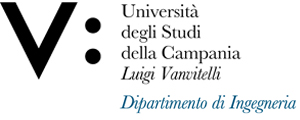Wind energy
Over the last few decades, the increase in energy demand, the prevailing use of unsustainable resources and environmental degradation have become critical issues that require quick action. In this scenario, the use of renewable energy sources is an opportunity, and the wind is one of the most secure, reliable and cost-effective. The rapid growth of the wind energy industry has brought the construction of large-scale wind turbines in areas characterized by high seismic hazard. Consequently, the multi-megawatt Horizontal Axis Wind Turbine (HAWTs) have become very slender structures heavily loaded on top. Consequently, the increase of the mass of the Rotor-Nacelle Assembly (RNA) induces larger tower base moment demand, due to the combined effect of wind and seismic loads in the onshore installations and wind, seismic, and wave loads in off-shore ones. Therefore, the development of analytical methodologies and design criteria that allow accounting for these new multi-risk scenarios represent one of the main topic of this research activity.
On the other hand, the frontier of offshore wind energy is represented by deep-water installations, where the use of floating foundations is promoted. The advantages of deep-water wind generation (Floating Offshore Wind Turbines - FOWTs) are the availability of an almost unlimited resource, together with lower visual and acoustic impact. The spread of FOWTs is strictly related to the development of research activities towards the assessment of their structural response, the definition of specific design procedures, and the development of technical-economic feasibility studies to justify their financial sustainability. In particular, the assessment of the structural response of multi-megawatt wind turbine installations on different floating foundations due to the combined effects of irregular waves and turbulent wind fields still represents an open research issue. Floating offshore wind turbines are complex dynamic structures, and the definition and calibration of appropriate numerical models still require comparison analyses with experimental test investigations. This represent another topic of this research activity.
Further research topic is focused on technical and economic analysis tools supporting the investments in offshore deep-water wind energy installations. One of the main aspects in the developing of a wind farm project is the overall cost and its breakdown. Consequently, the availability of cost-benefit analysis tools is fundamental to highlight the greater producibility and the sustainability of the offshore wind turbines investment.








